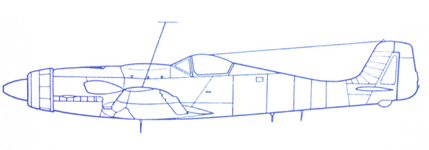- Thread starter
- #21
The Fw190A was smaller than a P-51D - there's really not much you can remove wing or fuselage wise and still have it be airworthy.
Its dimensions were smaller. Empty weight was the same though with 3200 kg.
Structurally the Fw 190 was just quite heavy for a reason.
Tank designed her as a cavalry horse.
Last edited:

